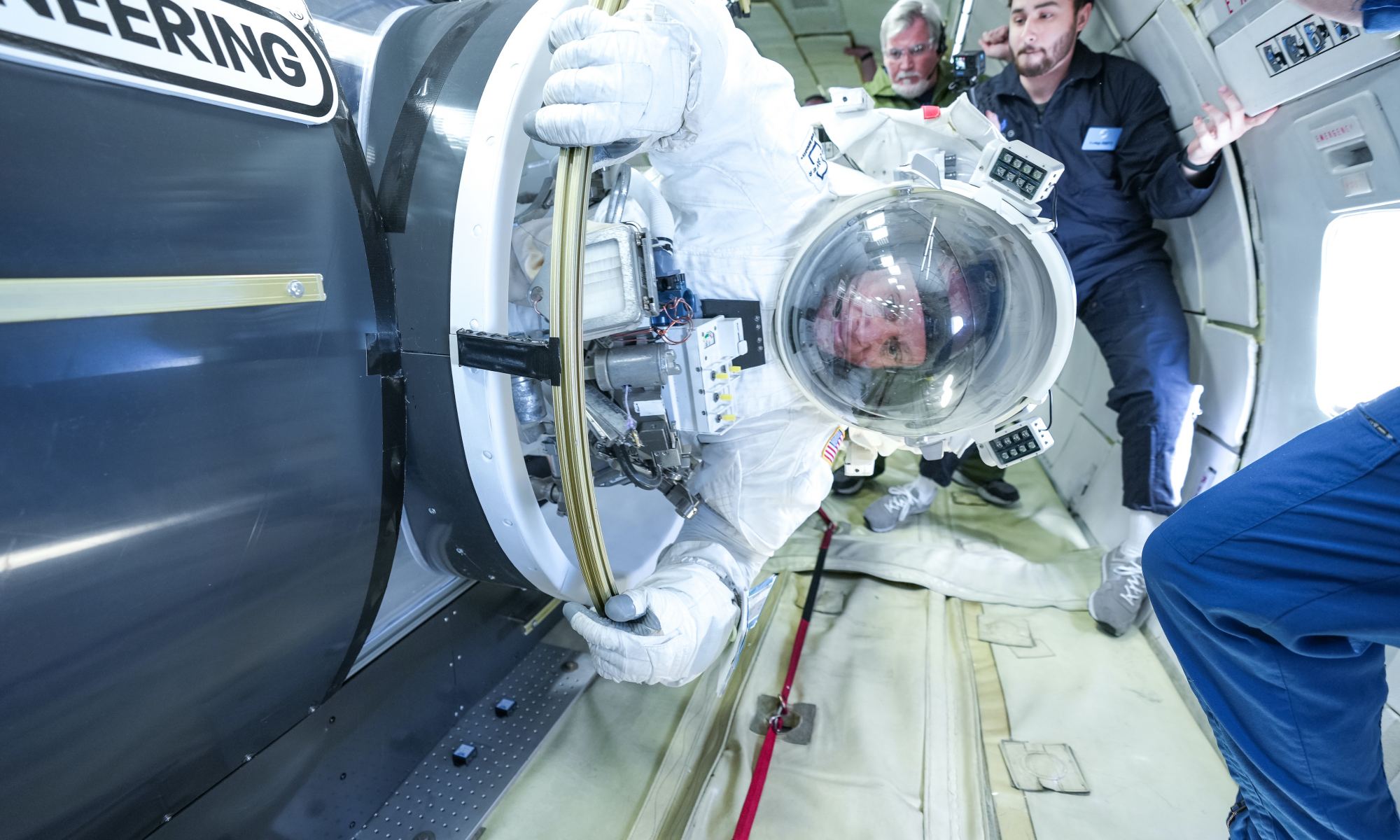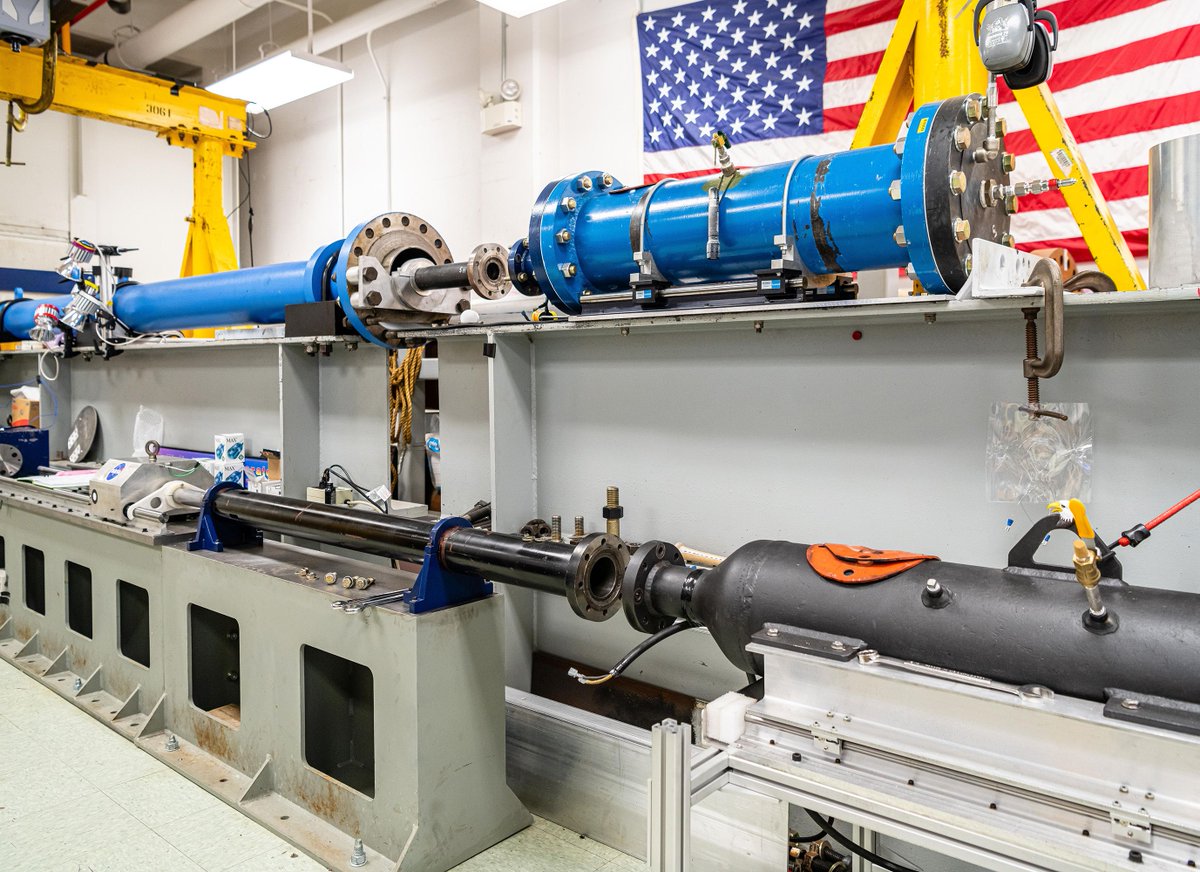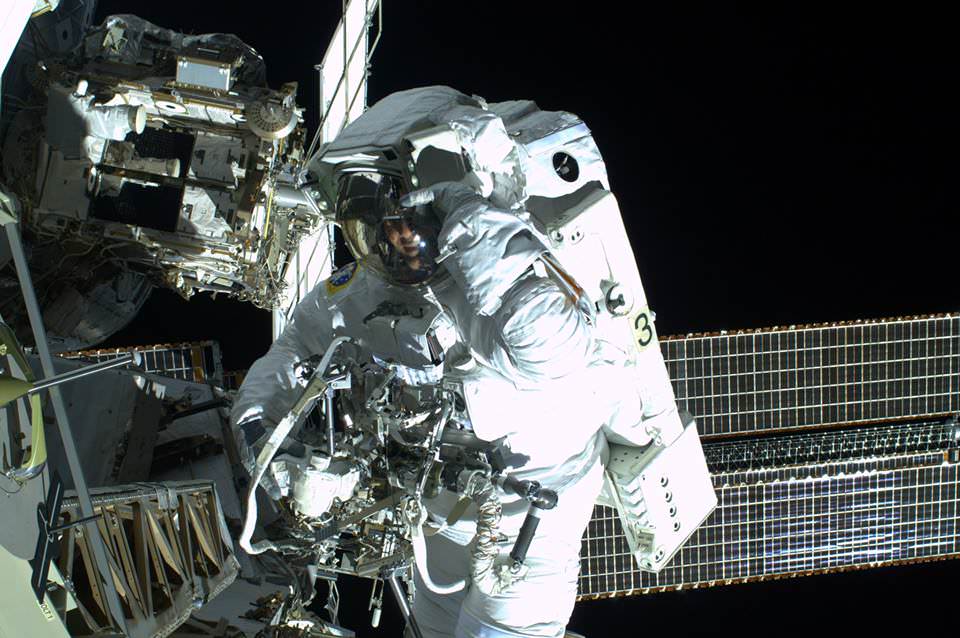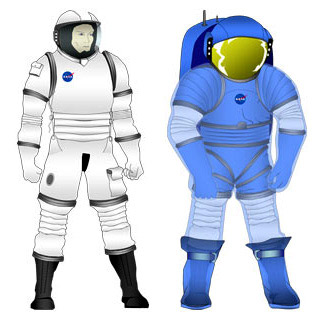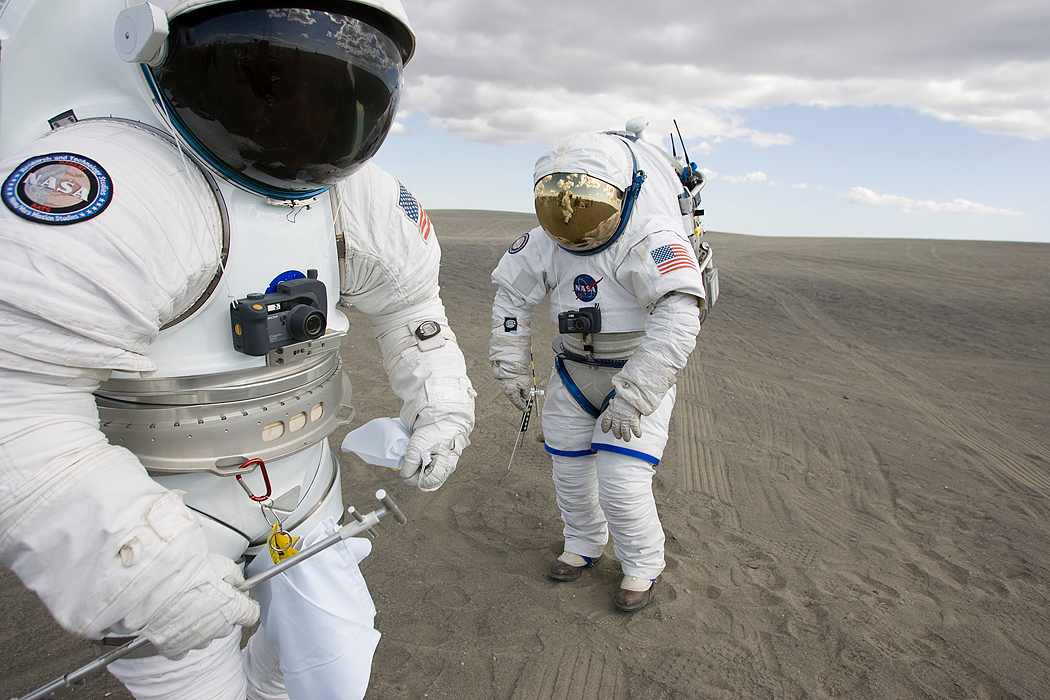Considerable effort goes into the design of space suits and space agencies across the world are always working on improvements to enhance safety and mobility of the designs. NASA is now working with Collins Aerospace to develop their next generation spacesuit for the International Space Station. The new designs are tested extensively and recently, the new design was subjected to a ZeroG flight on board a diving aircraft.
Continue reading “Next Generation Spacesuit Gets Tested in Weightlessness”NASA has a Ballistic air gun to Hurl Rocks at Space Suits to Test Their Micrometeorite Protection
Shock testing is commonly used throughout engineering to determine how a product will do when impacted by something. That something could be anything from the ground to a cruise missile. Like so much else in space exploration, engineers at NASA are performing the same type of test, just scaled up. Instead of simply dropping the object under test, as is common in most settings, they shoot it with a steel ball going 3000 ft/second.
Continue reading “NASA has a Ballistic air gun to Hurl Rocks at Space Suits to Test Their Micrometeorite Protection”Astronaut Luca Parmitano’s Chilling First-Hand Account of His Mishap in Space
On July 16, Expedition 36 astronauts Chris Cassidy and Luca Parmitano had to cut a planned 7-hour spacewalk short after only an hour and a half due to a malfunction in Parmitano’s space suit, leaking water into his helmet and eventually cutting off his vision, hearing, and communications. Fortunately the Italian test pilot was able to safely return inside the ISS, but for several minutes he was faced with a pretty frightening situation: stuck outside Space Station with his head in a fishbowl that was rapidly filling with water.
On August 20, he shared his personal account of the event on his ESA blog.
“The only idea I can think of is to open the safety valve by my left ear: if I create controlled depressurisation, I should manage to let out some of the water, at least until it freezes through sublimation, which would stop the flow. But making a ‘hole’ in my spacesuit really would be a last resort…”
Parmitano’s description of his suit mishap begins as I’m sure all spacewalks do: with a sense of energy and enthusiasm for a job about to be performed in a challenging yet exotic and undeniably privileged location.
“My eyes are closed as I listen to Chris counting down the atmospheric pressure inside the airlock – it’s close to zero now. But I’m not tired – quite the reverse! I feel fully charged, as if electricity and not blood were running through my veins. I just want to make sure I experience and remember everything. I’m mentally preparing myself to open the door because I will be the first to exit the Station this time round. Maybe it’s just as well that it’s night time: at least there won’t be anything to distract me.”
But even though the EVA initially progressed as planned — ahead of schedule, in fact — it soon became obvious to Parmitano that something was amiss with his suit.
“The unexpected sensation of water at the back of my neck surprises me – and I’m in a place where I’d rather not be surprised. I move my head from side to side, confirming my first impression, and with superhuman effort I force myself to inform Houston of what I can feel, knowing that it could signal the end of this EVA.”
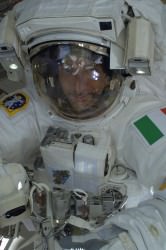
It didn’t take long before an uncomfortable situation escalated into something potentially very dangerous.
“As I move back along my route towards the airlock, I become more and more certain that the water is increasing. I feel it covering the sponge on my earphones and I wonder whether I’ll lose audio contact. The water has also almost completely covered the front of my visor, sticking to it and obscuring my vision. I realise that to get over one of the antennae on my route I will have to move my body into a vertical position, also in order for my safety cable to rewind normally. At that moment, as I turn ‘upside-down’, two things happen: the Sun sets, and my ability to see – already compromised by the water – completely vanishes, making my eyes useless; but worse than that, the water covers my nose – a really awful sensation that I make worse by my vain attempts to move the water by shaking my head. By now, the upper part of the helmet is full of water and I can’t even be sure that the next time I breathe I will fill my lungs with air and not liquid. To make matters worse, I realise that I can’t even understand which direction I should head in to get back to the airlock. I can’t see more than a few centimetres in front of me, not even enough to make out the handles we use to move around the Station.”
After contemplating opening a hole in his helmet to let out some of the water — a “last resort,” indeed — Parmitano managed to get back inside the airlock with help from Cassidy. But he still had to deal with the process of repressurization, which itself takes a few minutes.
Read more: Space Water Leak Prompts NASA Mishap Investigation
“I try to move as little as possible to avoid moving the water inside my helmet. I keep giving information on my health, saying that I’m ok and that repressurization can continue. Now that we are repressurizing, I know that if the water does overwhelm me I can always open the helmet. I’ll probably lose consciousness, but in any case that would be better than drowning inside the helmet.”
Now, a month after the mishap, Parmitano reflects on the nature of the event and of space travel in general.
“Space is a harsh, inhospitable frontier and we are explorers, not colonisers. The skills of our engineers and the technology surrounding us make things appear simple when they are not, and perhaps we forget this sometimes.”
“Better not to forget,” he advises.
Read Luca’s full blog post on the ESA site here.
ESA astronaut Luca Parmitano is the first of ESA’s new generation of astronauts to fly into space. Luca will serve as flight engineer on the Station for Expeditions 36 and 37. He qualified as a European astronaut and was proposed by Italy’s ASI space agency for this mission.
Astronaut Costume
Many children dream of going to space one day. While you cannot send them there now, you can at least let them pretend with an astronaut costume. These sites provide a variety of astronaut costumes. Many of the sites also have costumes for adults as well, along with an assortment of accessories.
Costume Express has a wide range of astronaut costumes for both children and adults. In addition to the white astronaut outfits, they also have blue and orange suits like those worn by NASA astronauts. There is even a jetpack backpack for kids.
Costume Craze offers a good selection of costumes. With a variety of styles for both children and adults, you can choose from orange and blue jumpsuits, or white and silver spacesuits.
The Space Store has one of the largest selections of apparel and space clothing. They have replica spacesuits that look like the real thing and are made to order as well as accessories to go with it. They also have plenty of sets for children at more reasonable prices. In addition to actual outfits, the store has NASA patches for sale.
Just Kids Costumes has several astronaut costumes from which to choose. The site also has costumes for toddlers.
Costume Zone offers a number of astronaut costumes for adults and children. They also have astronaut helmet and boots to complete the look.
Fantasy Toyland has different style astronaut costumes for your child.
Little Kids Stuff has everything your little astronaut needs – except maybe for a rocket. The site has costumes for infants up to adults. One of their best costumes is a fairly realistic-looking outfit that comes with the space suit, boots, a space backpack, and a space helmet.
Space Toys, in addition to selling toys, offers space apparel. Much of the clothing at this site is a step up from your normal Halloween costume. The merchandise at Space Toys is extremely realistic. The prices do match the higher quality though. The website has more merchandise for adults than most other sites, but they also have plenty for children as well.
Astronaut Space Suits offers high-end replica spacesuits to their customers.
Universe Today has articles on the spacesuit and how many men have walked on the Moon.
If you are looking for more information, check out making your own astronaut costume and Costume Express.
Astronomy Cast has an episode on spacesuits.
Astronaut Helmet
The astronaut helmet protects its wearer from micrometeoroids, solar ultraviolet as well as infrared radiation. It is made up of the protective shell, neck ring, vent pad and feed port. Protection from radiation is actually provided by the Extravehicular Visor Assembly, which is fitted over the helmet.
A typical astronaut helmet like those worn in the Apollo missions is made of highly strengthened polycarbonate. Polycarbonate is a high impact-resistant plastic that you can also find in bulletproof glass and exterior automotive parts.
The neck ring mentioned above is a vital component in the pressure sealing feature of the astronaut’s outfit and attaches the helmet to the suit. The vent pad, which is fastened to the rear, has a recess that provides ventilation flow related functions. The feed port, on the other hand, supports the water and feed probes as well as the purge valve.
Today’s helmets have a built-in cam which allow us to see what they’re doing up there.
Both the helmet and suit provide protection from the dangerously low pressure of outer space. Without them, internal pressure in the astronaut’s body will push blood vessels and tissue outward.
Contrary to what Hollywood has portrayed in sci-fi films like Arnold Schwarzenegger’s Total Recall wherein bodies blow up when exposed to the vacuum of space, the effects are less sensational though. Nevertheless, full exposure to vacuum can still be harmful – lung damage being one of the side effects.
A lot of inconveniences accompany the wearing of an astronaut helmet. For example, you can’t just take it off to scratch a simple itch on your nose. To remedy this, a velcro patch is stuck on the inside to serve as a scratcher.
Also, since the helmet is fastened to the suit, astronauts who forget this end up facing its inner walls when they turn their heads. This can be quite annoying when they’d have to see panel switches above or at the sides from where they’re initially facing.
The problem gets even more complicated when they’re sitting. Since they’re strapped on their seats, astronauts can’t just lean back to face upward. If they want to turn their heads, they’d have to grab the helmet so they can make it turn to the desired direction.
Want to know what the most inconvenient predicament is? Space sickness or Space Adaptation Sickness (SAS) can strike even the most seasoned pilots, so imagine yourself as an astronaut having to puke right in the middle of a spacewalk. Still want to be the next Buzz Aldrin?
You can read more about astronaut helmet here in Universe Today. Here are the links:
There’s more about it at NASA. Here are a couple of sources there:
Here are two episodes at Astronomy Cast that you might want to check out as well:
Source: NASA

